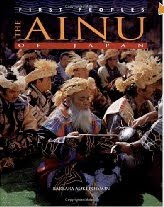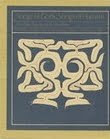
Every once in a while I come across an interesting blog post about one or more of Hokkaido's Ainu museums. I have been to them all and have mentioned them from time to time on this blog, but I enjoy the fresh perspective and sometimes startling insights that first-time visitors have on the subject.
Take, for example, P.D.Healey's post on the Shiraoi Ainu Museum & Village (also called Poroto Kotan). At the end of an informative and upbeat post briefly explaining who the Ainu are and what the museum offers, Mr. Healey makes a comment comparing the feel of place to "some of the faux Native American tourist traps I remember visiting on trips out west as a kid in the 1960s." This is an understandable comparison, especially when you have to walk through "a gauntlet of shops selling Ainu related souvenir items" to get into and out of the museum village itself. It helps to be prepared for this, as Shiraoi Ainu Museum is definitely worth the trip.
More recently I found Justin Hunter's blog which has a series of posts about different Ainu museums, including one of my favorites, the Sapporo Ainu Cultural Center (also called Pirka Kotan). This museum is at the southern edge of Sapporo city limits, making it a good choice for visitors who are short on time. But the best thing about it is that it is so very hands-on. "The idea behind their museum is to get a true hands-on experience to see how these things feel, sound, smell, etc. Its awesome!!!" Mr. Hunter enthuses in his post, and I absolutely agree.
Another post on the Hunter blog that I appreciated was the one about Asahikawa. Asahikawa is Hokkaido's second largest city, and it has a fine city museum with lots of Ainu exhibits. Mr. Hunter has many nice things to say about the exhibits, but found it lacking in comparison to Sapporo's Pirka Kotan and Shiraoi's Poroto Kotan, which he had blogged about earlier. Although "the artifacts themselves were wonderful," he says, "the Asahikawa exhibits felt very distant and the layout seemed quite unnatural."
I was amused to read his description of another little museum, grandly calling itself the Ainu Memorial Building, which is so small and hard to see from the road that he almost missed it. "A complete hole in the wall," he calls it, though he gives it credit for having some rare artifacts. I am familiar with this little museum. It is owned and managed by the son of the late Kawamura Kaneto, the well-loved and respected Ainu chief elder of Chikabumi village (now part of Asahikawa city). Chikabumi is close to where I lived as a child, and I spent a great deal of time there because Kaneto and my father were involved in a joint project. I returned for a visit a few years ago, and saw the museum for the first time. It was exactly as Mr. Hunter describes.
Sapporo, Shiraoi, and Asahikawa are not the only places in Hokkaido with Ainu museums and/or memorials to Ainu life and lore. Others can be found in Nibutani, Kushiro, and Noboribetsu. As I come across insightful or amusing traveler's descriptions of these places, I will bring them to your attention. Your input is also welcome.
.
.










